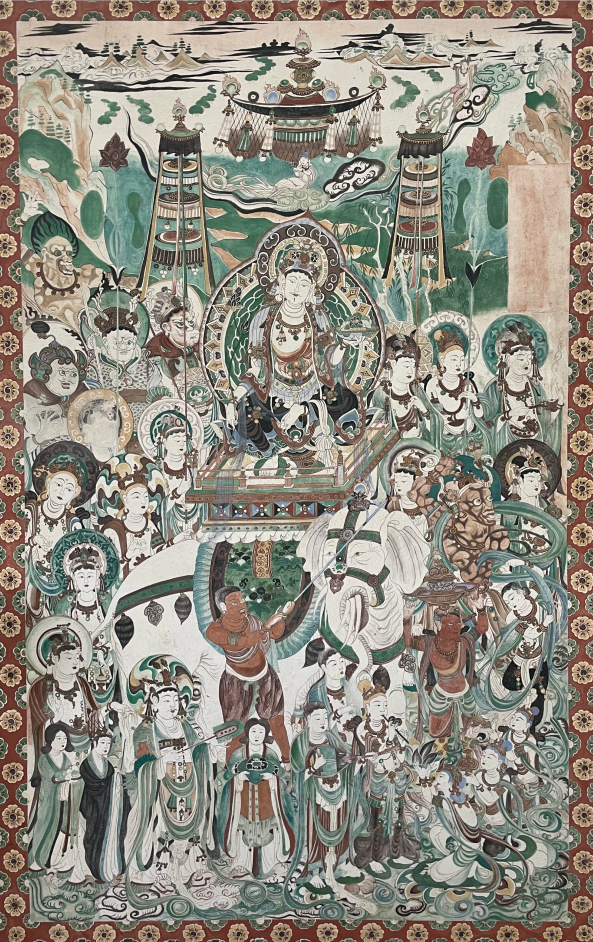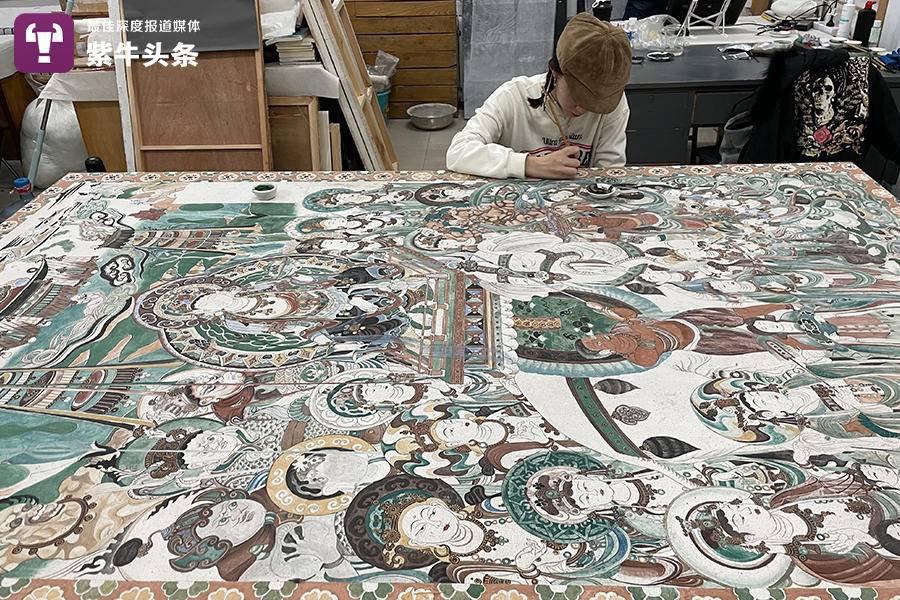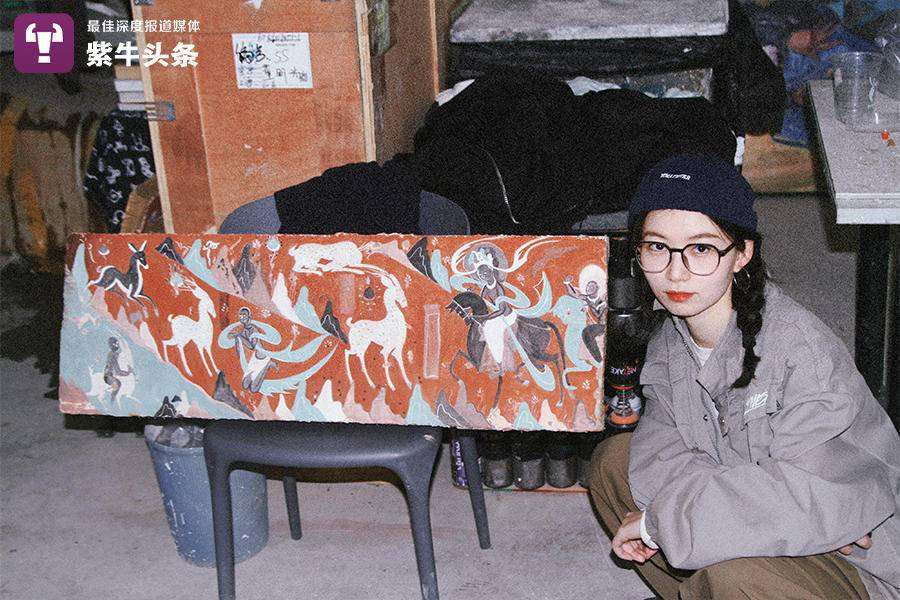A Chinese female Gen-Zer has spent half a year recreating a mural found inside cave No. 159 of the Mogao grottoes located in Dunhuang, northwest China’s Gansu Province, with the mural measuring 2.1 meters long and 1.35 meters wide. The magnificent recreation aroused widespread attention after the young woman shared the process she used to produce the work with a larger audience.

Photo shows the painting by Qin Yueyu based on a mural found inside cave No. 159 of the Mogao grottoes in Dunhuang, northwest China’s Gansu Province. (Photo courtesy of the interviewee)
Qin Yueyu is a postgraduate student from the Shandong College of Arts, which is located in Jinan, capital city of east China’s Shandong Province. According to Qin, the mural painting was adopted as the subject matter for a graduation project of hers, and the reason why she chose to imitate the murals found inside the Mogao grottoes is that they represent the best of the mural art of Dunhuang from the mid-Tang Dynasty (618-907).
In addition, compared with other ancient murals inside the Mogao grottoes, which have suffered varying degrees of damage, this one found in cave No. 159 of the grottoes is more well-preserved, and the patterns on the mural have served as a source of inspiration for face masks in certain genres of operas in China.
The painting plate Qin used was made of clay. When making the painting plate, Qin collected mud from the lakeside in her city and then screened the mud to remove any larger solid remnants. It took her a whole day just to finish this one task.
“When I was making the plate, I had to wait patiently for each layer of clay to dry before I could move on to the next step, or else cracking would occur, which would then affect the following procedures,” Qin introduced, adding that she had to repeatedly color the painting so as to produce a colored effect close to the one expressed in the original ancient mural. She also aged the painting so that it would take on a more antique-like appearance.

Qin Yueyu works on the painting based on a mural found inside cave No. 159 of the Mogao grottoes in Dunhuang, northwest China’s Gansu Province. (Photo courtesy of the interviewee)
Qin has recreated dozens of murals over the past three years since she started her postgraduate studies, including those from monasteries and grottoes in north China’s Shanxi Province, the country’s capital of Beijing, northwest China’s Xinjiang Uygur Autonomous Region, and east China’s Shandong Province, in addition to the Mogao grottoes of Dunhuang.
“The Mogao grottoes in Dunhuang aroused my interest when I was watching the Nine-Colored Deer, a Chinese animated film, as a child,” said Qin. The Nine-Colored Deer, produced in 1981 by the Shanghai Animation Film Studio, was based on a mural discovered from cave No. 257 of the Mogao caves in Dunhuang.
Qin first recreated the mural discovered from cave No. 257 of the Mogao caves in Dunhuang as a second year postgraduate student, having also created imitation works based on the same mural several times afterwards.

Photo shows a painting by Qin Yueyu based on a mural found inside cave No. 257 of the Mogao grottoes in Dunhuang, northwest China’s Gansu Province. (Photo courtesy of the interviewee)
Apart from imitating ancient murals, Qin also acquired knowledge on the protection of ancient cultural relics as a graduate student.
The young woman hopes that she might be able to express the aesthetic value of the famed Mogao grottoes in tune with the cultural backdrop of contemporary times. “The ancient murals are immovable cultural relics found inside grottoes, palaces, monasteries, or tombs, and by recreating these murals, we can turn them into movable works of art,” expressed Qin.(cited from chinakongzi.org, source from People's Daily Online)





